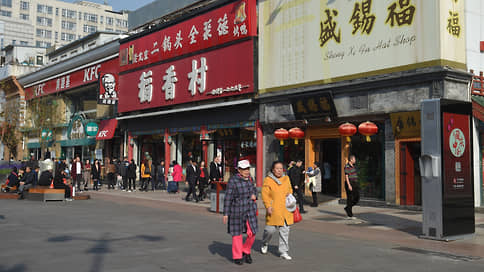The Chinese economy grew above expectations in the third quarter
[ad_1]

In the third quarter, the Chinese economy grew above expectations – by 4.9% in annual terms, data from the National Bureau of Statistics of the People’s Republic of China showed. The statistics of both industrial production and retail sales are improving; the drawdown remains only in the volume of capital investments – the decline in the real estate market in China is only getting worse. The country’s Central Bank, however, is ready to further soften its own monetary policy.
The growth of the Chinese economy in the third quarter slowed to 4.9% in annual terms, the National Bureau of Statistics of the People’s Republic of China reported yesterday. The analysts’ consensus forecast assumed a slowdown in growth to 4.4% after its acceleration to 6.3% in the second quarter and growth of 4.5% in the first. The improvement in the situation is noticeable in quarterly data – GDP growth accelerated to 1.3% in July-September after growing by 0.5% in the second quarter and 1% in the first. Over three quarters, the Chinese economy grew by 5.2% – this means that without a significant decline at the end of the year, Chinese GDP will still exceed the stated level of 5%.
Industrial production in September increased by 4.5% year on year – the same as in August (an increase of 4.3% was expected), but the Purchasing Managers’ Index (PMI, a leading indicator of business activity) was above 50 points (this bar separates the expansion of activity from its decline). The indicator increased to 50.2 points from 49.7 points in August. This is the first time the level has been exceeded by 50 points in the last six months. Retail sales also grew stronger than analysts expected – by 5.5% (in August – by 4.6%). The profits of industrial enterprises are also growing (over eight months they decreased by 11.7% – the depth of the decline decreased by 5.1 percentage points compared to the figure for the first half of the year), and the index of activity in the service sector has been increasing for the second month.
The improvement in indicators, however, is accompanied by a deepening decline in the real estate market – investments in it over the nine months fell more sharply, by 9.1% year-on-year (in January-August the decline was 8.8%). Total private investment over the three quarters decreased by 0.6% year on year – excluding investments in real estate, the increase would have been 9.1%, while investments in infrastructure increased by 6.2%. Unemployment continues to decline – its level decreased by 0.2 percentage points, to 5%. Foreign trade statistics, meanwhile, show a gradual recovery in exports – in September it increased by 5% compared to August, imports increased by 2%, but in annual terms both indicators decreased by 6.2%.
Note that in the context of weaker external demand, the Central Bank of China has already announced the need to “focus on expanding domestic demand and supporting consumer confidence,” while promising to “pay more attention to the balance between economic growth and sustainability.” At the same time, the regulator said that “more bright spots are emerging” in the Chinese economy. At the same time, the Central Bank tightened its approaches to exchange regulation, limiting the possibilities for short-selling against the background of debt problems of such large developers as Evergrande and Country Garden.
Zero price growth is also not an obstacle to stimulating policy – consumer prices in September increased by 0.2% compared to August (year-on-year – no changes, prices for goods decreased by 0.9%, while services rose in price by 1.3% ). Meanwhile, producer prices continue to decline – in annual terms in September they were lower by 2.5%, but increased by 0.4% by August (the month-on-month increase was 0.2%, before that the dynamics were negative since April).
[ad_2]
Source link






